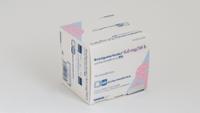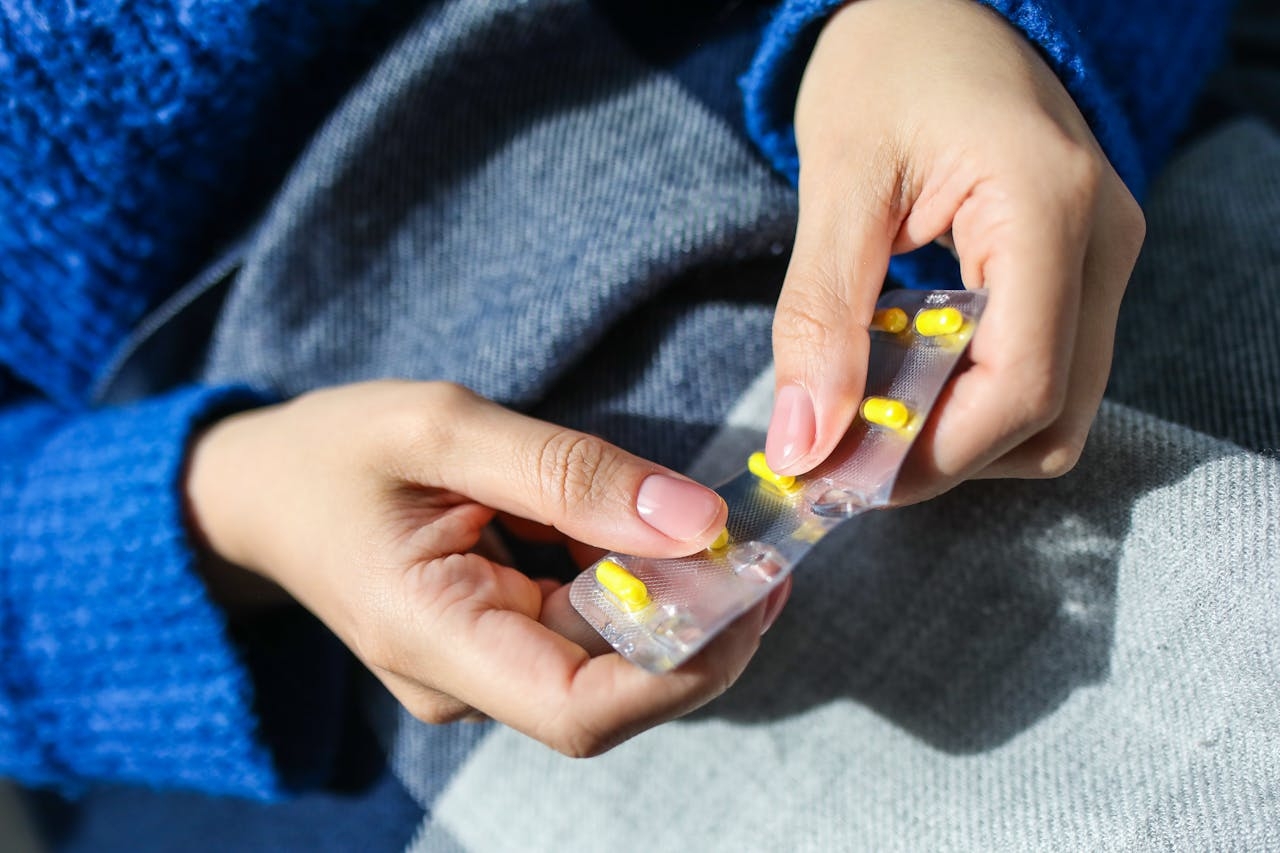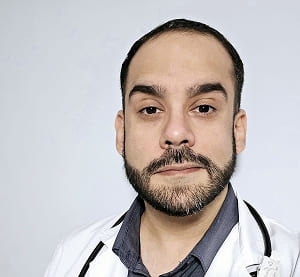

Rivastigmina sandoz 4,6 mg/24 h parches transdermicos efg


Como usar Rivastigmina sandoz 4,6 mg/24 h parches transdermicos efg
Introduction
Prospecto:information for the Patient
Rivastigmina Sandoz 4.6 mg/24 h Transdermal Patches EFG
Read this prospectus carefully before starting to use this medication, as it contains important information for you.
- Keep this prospectus, as you may need to read it again.
- If you have any doubts, consult your doctor or pharmacist.
- This medication has been prescribed only to you, and you must not give it to other people, even if they have the same symptoms as you, as it may harm them.
- If you experience any adverse effects, consult your doctor or pharmacist, even if they are not listed in this prospectus. See section 4.
1.Rivastigmina Sandoz and its use
2.Things you need to knowbeforestarting touse Rivastigmina Sandoz
3.How to use Rivastigmina Sandoz
4.Adverse effects
5.Storage of Rivastigmina Sandoz
6.Contents of the package and additional information
1. What is Rivastigmina Sandoz and what is it used for
The active ingredient of Rivastigmina Sandoz is rivastigmina.
Rivastigmina belongs to the group ofdenominatedcholinesterase inhibitors. In patients with Alzheimer's disease, certain nerve cells die in the brain, causing low levels of acetylcholine neurotransmitters (a substance that allows nerve cells to communicate with each other). Rivastigmina acts by blocking the enzymes that break down acetylcholine: acetylcholinesterase and butyrylcholinesterase. By blocking these enzymes, rivastigmina allows an increase in acetylcholine in the brain, helping to reduce the symptoms of Alzheimer's disease.
Rivastigmina Sandoz is used for the treatment of adult patients with mild to moderately severe Alzheimer's disease, a progressive brain disorder that gradually affects memory, intellectual capacity, and behavior.
2. What you need to know before starting to use Rivastigmina Sandoz
Do not use Rivastigmina Sandoz
- if you are allergic torivastigmina (the active ingredient of Rivastigmina Sandoz) or to any of the other components of this medication (listed in section 6),
- if you have ever had an allergic reaction to a similar medication (carbamate derivatives),
- if you have a skin reaction that extends beyond the size of the patch, if there is a more intense local reaction (such as blisters, increased skin inflammation, swelling) and if there is no improvement within 48 hours after removing the transdermal patch.
If you find yourself in any of these situations, inform your doctor and do not use Rivastigmina Sandoz transdermal patches.
Warnings and precautions
Consult your doctor before starting to use Rivastigmina Sandoz:
- if you have or have had any irregular or slow heart rhythm,
- if you have or have had any active stomach ulcer,
- if you have or have had any difficulty urinating,
- if you have or have had any seizures,
- if you have or have had any asthma or severe respiratory disease,
- if you suffer from tremors,
- if you have low body weight,
- if you have gastrointestinal reactions such as dizziness (nausea), dizziness (vomiting), and diarrhea. You may become dehydrated (loss of a large amount of liquids) if vomiting or diarrhea is prolonged,
- if you have liver problems (hepatic insufficiency).
If you find yourself in any of these situations, your doctor may consider the need for closer monitoring while you are on treatment.
If you have not used the patches for more than three days, do not apply another one without consulting your doctor first.
Children and adolescents
Rivastigmina Sandoz should not be used in the pediatric population for the treatment of Alzheimer's disease.
Use of Rivastigmina Sandoz with other medications
Inform your doctor or pharmacist if you are using, have used recently, or may need to use any other medication.
Rivastigmina Sandoz may interfere with anticholinergic medications, some of which are medications used to relieve stomach cramps or spasms (e.g., diciclomina), for the treatment of Parkinson's disease (e.g., amantadina), or to prevent motion sickness (e.g., difenhidramina, escopolamina, or meclizina).
Rivastigmina Sandoz should not be administered at the same time as metoclopramida (a medication used to relieve or prevent nausea and vomiting). Taking the two medications together may cause problems such as stiffness in the limbs and hand tremors.
If you need to undergo surgery while using Rivastigmina Sandoz transdermal patches, inform your doctor that you are using them, as they may excessively potentiate the effects of some anesthetic muscle relaxants.
Caution should be exercised when using Rivastigmina Sandoz with beta blockers (medications such as atenolol used to treat hypertension, angina, and other cardiovascular conditions). Taking the two medications together may cause complications such as bradycardia (slow heart rate) that may lead to fainting or loss of consciousness.
Pregnancy, lactation, and fertility
If you are pregnant or breastfeeding, or if you think you may be pregnant, consult your doctor or pharmacist before using this medication.
If you are pregnant, your doctor will evaluate the benefits of using rivastigmina against the possible adverse effects on the fetus. Rivastigmina should not be used during pregnancy unless it is clearly necessary.
You should not breastfeed during your treatment with Rivastigmina Sandoz transdermal patches.
Driving and operating machinery
Your doctor will inform you if your condition allows you to drive or use machines safely.
Rivastigmina may cause dizziness and severe confusion. If you feel dizzy or confused, do not drive, use machines, or perform other tasks that require attention.
3. How to use Rivastigmina Sandoz
Follow exactly the administration instructions of Rivastigmina Sandoz contained in this leaflet and those indicated by your doctor. If in doubt, consult your doctor, pharmacist or nurse.
IMPORTANT:
- Remove the previous patch before putting a new one.
- Wear only one patch per day.
- Do not cut the patch into pieces.
- Press the patch firmly against the skin with the palm of your hand for at least 30 seconds.
How to start treatment
Your doctor will indicate the most suitable dose of Rivastigmina Sandoz for your case.
- Normally, treatment starts with rivastigmina 4.6 mg/24 h*.
- The usual recommended daily dose is rivastigmina 9.5 mg/24 h*. If this dose is well tolerated, your doctor may consider increasing the dose to 13.3 mg/24 h.
- Wear only one Rivastigmina Sandoz patch at the same time and replace the patch with a new one every 24 hours.
* If a dose is not achievable with this medication, other doses are available.
Your doctor may adjust the dose during treatment depending on your individual needs.
If you have not used the patches for three days, do not put a new one on without consulting your doctor. Treatment with transdermal patches can be restarted at the same dose if treatment is not interrupted for more than three days. Otherwise, your doctor will have you restart your treatment with Rivastigmina 4.6 mg/24 h transdermal patches.
Rivastigmina Sandoz can be used with food, drinks and alcohol.
Where to place your Rivastigmina Sandoz patch
- Before putting on a patch, make sure the skin is clean, dry and hair-free, without powders, oils, moisturizers or lotions that may prevent the patch from sticking well to the skin, without cuts, redness or irritation.
- Remove any existing patch carefully before putting on a new one.Wearing multiple patches on your body may expose you to an excessive amount of this medication, which can be potentially hazardous.
- Put on onlyONEpatch per day inONEof the possible areas as shown in the following diagrams:
- upper left or upper right arm,
- upper left or upper right chest (avoiding breasts in women),
- upper left or upper right back,
- lower left or lower right back.
Every 24 hours, remove the previous patch before putting a new one in only ONE of the following possible areas. |
When changing patches, the previous patch must be removed before putting on a new patch in a different area of the skin each time (for example, one day on the right side of the body and the next day on the left side; or one day on the upper part of the body and the next day on the lower part). Wait at least 14 days to put a new patch in the same area of the skin again.
How to apply your Rivastigmina Sandoz patch
Rivastigmina Sandoz patches are thin, opaque plastic and stick to the skin. Each patch is in a protective envelope that protects it until it is put on. Do not open the envelope or remove the patch until you are ready to put it on.
| ||||
| ||||
| ||||
|
|
If this helps, you can write on the patch, for example, the day of the week, with a fine-tip ballpoint pen.
You must wear the patch continuously until you change it for a new one. When putting on a new patch, you can try different areas to find the ones that are most comfortable and where clothing does not rub against the patch.
How to remove your Rivastigmina Sandoz patch
Gently pull one of the edges of the patch to slowly remove it from the skin. If there are any remaining adhesive residues on the skin, soak the area with warm water and mild soap or use baby oil to remove it. Do not use alcohol or other solvents (nail polish removers or other solvents).
After removing the patch, wash your hands with water and soap. If you come into contact with your eyes or if your eyes become red after handling the patch, wash immediately with plenty of water and seek medical advice if the symptoms do not resolve.
Can you wear your Rivastigmina Sandoz patch when bathing, swimming or exposing yourself to the sun?
- Bathing, swimming or showering should not affect the patch. Make sure it does not come off partially while doing these activities.
- Do not expose the patch to an external heat source (e.g. excessive sunlight, sauna, solarium) for long periods of time.
What to do if a patch falls off
If a patch falls off, put on a new one for the rest of the day and change it the next day at the usual time.
When and for how long to wear your Rivastigmina Sandoz patch
- To benefit from your treatment, you must put on a new patch every day, preferably at the same time.
- Wear only one Rivastigmina Sandoz patch at the same time and replace the patch with a new one every 24 hours.
If you use more Rivastigmina Sandoz than you should
If you accidentally put on more than one patch, remove all the patches from the skin and inform your doctor or pharmacist, or call the Toxicological Information Service, phone: 91 562 04 20 (indicating the medication and the amount taken). You may need medical attention.
Some people who have taken accidentally high doses of rivastigmina have experienced a feeling of discomfort (nausea), vomiting, diarrhea, high blood pressure and hallucinations. A slowing of heart rate and fainting may also occur.
If you forget to use Rivastigmina Sandoz
If you realize you have forgotten to put on a patch, put it on immediately. The next day, put on the next patch at the usual time. Do not put on two patches to compensate for the one you forgot.
If you interrupt treatment with Rivastigmina Sandoz
Inform your doctor or pharmacist if you stop using the patches.
If you have any other questions about the use of thismedication, ask your doctororpharmacist.
4. Possible Adverse Effects
Like all medicines, this medicine may cause side effects, although not everyone will experience them.
You may experience side effects more frequently when you start treatment or when your dose is increased. Side effects usually disappear gradually as your body gets used to the medicine.
If you notice any of the following serious side effects, remove the patch and immediately inform your doctor:
Frequent(may affect up to 1 in 10 people)
- Loss of appetite.
- Sensation of dizziness.
- Sensation of agitation or numbness.
- Urinary incontinence (inability to retain urine properly).
Infrequent(may affect up to 1 in 100 people)
- Problems with your heart rhythm, such as slow heart rate.
- Seeing things that do not exist (hallucinations).
- Stomach ulcer.
- Dehydration (loss of a large amount of fluids).
- Hyperactivity (high level of activity, restlessness).
- Aggression.
Rare(may affect up to 1 in 1,000 people)
- Falls.
Very rare(may affect up to 1 in 10,000 people)
- Rigidity of the arms and legs.
- Trembling in the hands.
Unknown(cannot be estimated from available data)
- Allergic reaction where the patch was applied, such as blisters or skin inflammation.
- Worsening of Parkinson's disease symptoms, such as tremor, rigidity, and difficulty moving.
- Pisa syndrome (condition involving involuntary muscle contraction and abnormal tilting of the body and head to one side).
- Pancreatitis. Symptoms include upper stomach pain, often accompanied by dizziness (nausea) or vomiting.
- Fast or irregular heart rhythm.
- High blood pressure.
- Seizures (convulsions).
- Liver disorders (yellowing of the skin, yellowing of the white of the eyes, abnormal darkening of the urine, or unexplained nausea, vomiting, fatigue, and loss of appetite).
- Changes in liver function tests.
- Sensation of restlessness.
- Nightmares.
If you notice any of the side effects listed above, remove the patch and immediately inform your doctor.
Other side effects experienced with rivastigmine in capsules or oral solution and that may occur with patches:
Frequent(may affect up to 1 in 10 people)
- Excessive salivation.
- Loss of appetite.
- Sensation of agitation.
- Sensation of general discomfort.
- Trembling or sensation of confusion.
- Increased sweating.
Infrequent(may affect up to 1 in 100 people)
- Irregular heart rhythm (e.g. fast heart rate).
- Difficulty sleeping.
- Accidental falls.
Rare(may affect up to 1 in 1,000 people)
- Seizures (convulsions).
- Ulcer in the intestine.
- Chest pain, likely caused by heart spasms.
Very rare(may affect up to 1 in 10,000 people)
- High blood pressure.
- Pancreatitis. Symptoms include severe upper stomach pain, often accompanied by dizziness (nausea) or vomiting.
- Gastrointestinal bleeding, manifested as blood in the stool or vomiting blood.
- Seeing things that do not exist (hallucinations).
- Some people who have been severely dizzy (vomiting) have had a tear in the esophagus, the tube that connects their mouth to their stomach.
Reporting side effects
If you experience any type of side effect, consult your doctor, pharmacist, or nurse, even if it is a possible side effect that does not appear in this prospectus. You can also report them directly through theSpanish System for Pharmacovigilance of Medicines for Human Use:https://www.notificaram.es. By reporting side effects, you can contribute to providing more information on the safety of this medicine.
5. Conservation of Rivastigmina Sandoz
Keep this medication out of the sight and reach of children.
Do not use this medication after the expiration date that appears on the packaging and on the container after CAD. The expiration date is the last day of the month indicated.
Do not store at a temperature above 25°C.
Store the transdermal patch inside the packaging until use.
Do not use any patch if you observe that it is damaged or shows signs of manipulation.
After removing a patch, fold it in half along the adhesive side towards the inside and press.
After introducing it into the original packaging, when disposing of the patch, ensure it remains out of the reach of children. After removing the patch, do not touch your eyes, and wash your hands thoroughly with water and soap. If your household waste is disposed of by incineration, you can dispose of the patch in your household waste. If not, take the used patches to the pharmacy, preferably in the original packaging.
Medications should not be disposed of through drains or in the trash. Deposit the containers and medications you no longer need at the SIGRE collection point at the pharmacy. If in doubt, ask your pharmacist how to dispose of the containers and medications you no longer need. In this way, you will help protect the environment.
6. Contents of the packaging and additional information
Rivastigmina Sandoz 4,6 mg /24 h transdermal patches composition
- The active ingredient is rivastigmina.Each patch releases 4.6 mg of rivastigmina in 24 hours, measures 5 cm2and contains 9 mg of rivastigmina.
- The other components are laminated poly(ethylene terephthalate), all rac-alfa-tocoferol, poly-(butylmethacrylate, methylmethacrylate), acrylic copolymer, silicone, dimethicone, fluoropolymer-coated polyester film, resin, pigments, organic polymers/resins.
Appearance of the product and contents of the package
They are fine, matrix-type transdermal patches, composed of three layers. The outer layer is beige-colored and marked with "RIV" and "4.6 mg/24 h".
Each sealed sachet contains a transdermal patch. The patches are available in packs of 7, 30, 60 (2 packs of 30), 90 (3 packs of 30) sachets.
Only some package sizes may be marketed.
Marketing authorization holder and manufacturer responsible
Marketing authorization holder
Sandoz Farmacéutica, S.A.
Centro Empresarial Parque Norte
Edificio Roble
C/ Serrano Galvache, 56
28033 Madrid
Spain
Spain
Manufacturer responsible
Hexal AG
Industriestrasse 25
83607 Holzkirchen
Germany
Novartis Pharma GmbH
Roonstrasse 25
90429 Nürnberg
Germany
Salutas Pharma GmbH
Otto-von-Guericke-Allee 1
39179 Barleben
Germany
Lek Pharmaceuticals d.d.
Verovškova 57
1526 Ljubljana
Slovenia
Novartis Farmacéutica, S.A.
Gran Vía de les Corts Catalanes, 764
08013 Barcelona
Spain
This medicine is authorized in the member states of the European Economic Area with the following names:
Austria:Rivastigmin Sandoz 4,6 mg/24 Stunden - transdermales Pflaster
Belgium:Rivastigmin Sandoz 4.6 mg/24u Pleister voor transdermaal gebruik
Czech Republic:Rivastigmine Sandoz 4,6 mg/24 h
Germany:Rivastigmin - 1 A Pharma 4,6 mg/24Stunden transdermales Pflaster
Denmark:Rivastigmine Sandoz
Spain:Rivastigmina Sandoz 4,6 mg/24 h transdermal patches EFG
Finland:Rivastigmine Sandoz
France:RIVASTIGMINE Sandoz 4,6 mg/24 h, dispositif transdermique
Ireland:Rivastigmine Sandoz 4.6 mg/24 hours Transdermal System
Italy:RIVASTIGMINA SANDOZ GmbH
Luxembourg:Rivastigmin Sandoz 4.6 mg/24u système transdermique
Malta:Rivastigmine Sandoz 4.6 mg/24 hours Transdermal System
Netherlands:Rivastigmine Sandoz 4,6 mg/24 uur, pleisters voor transdermaal gebruik
Norway:Rivastigmine Sandoz
Poland:Rivastigmine Sandoz
Portugal:Rivastigmine Sandoz
Romania:Rivastigmina Sandoz 4.6 mg/24 oreplasture transdermic
Sweden:Rivastigmine Sandoz
Slovakia:Rivastigmin Sandoz 4,6 mg/24 h transdermálna náplast
Slovenia:Rivastigmin Sandoz 4,6 mg/24 h transdermalni obliž
United Kingdom:Rivastigmine Sandoz 4.6 mg/24 hours Transdermal System
Last review date of this leaflet:March 2025
Detailed information about this medicine is available on the website of the Spanish Agency for Medicines and Medical Devices (AEMPS)http://www.aemps.gob.es/
- País de registo
- Substância ativa
- Requer receita médicaSim
- Fabricante
- Esta informação é apenas para referência e não constitui aconselhamento médico. Consulte sempre um médico antes de tomar qualquer medicamento. A Oladoctor não se responsabiliza por decisões médicas baseadas neste conteúdo.
Consulte um médico online sobre o Rivastigmina sandoz 4,6 mg/24 h parches transdermicos efg
Consulte um médico online
Tem perguntas sobre este medicamento ou sintomas? Obtenha orientação de um médico qualificado, de forma prática e segura.















